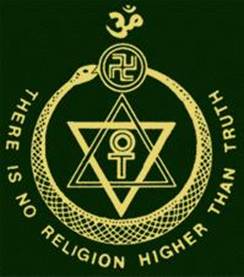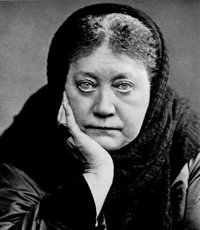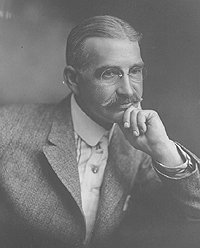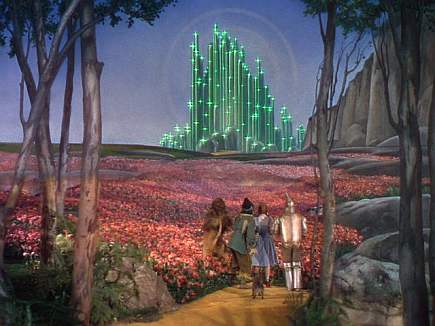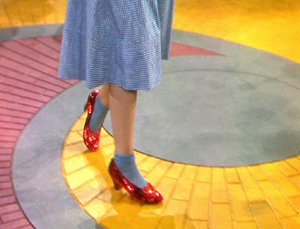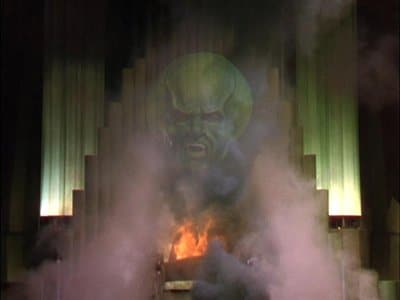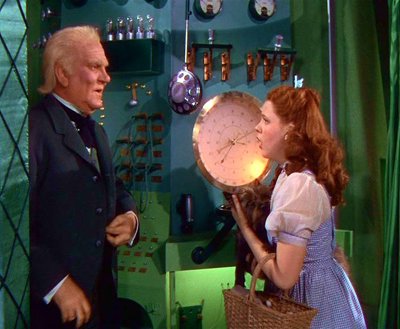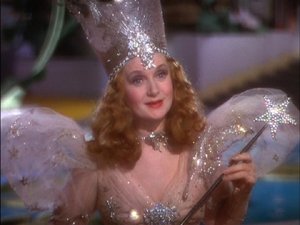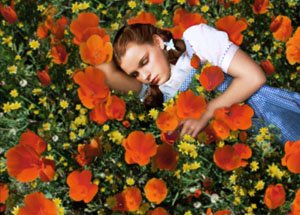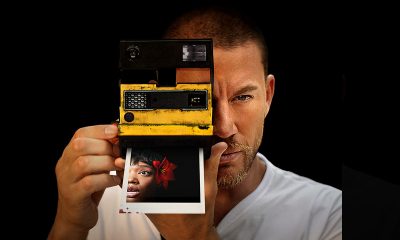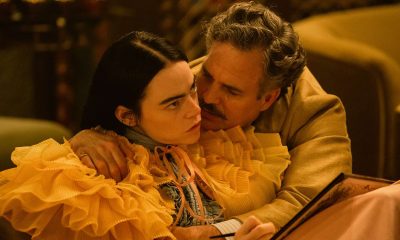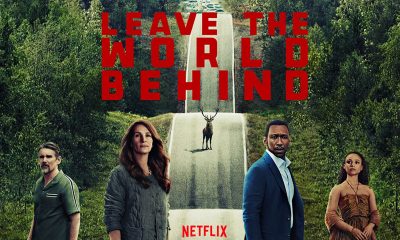Movies and TV
The Occult Roots of The Wizard of Oz
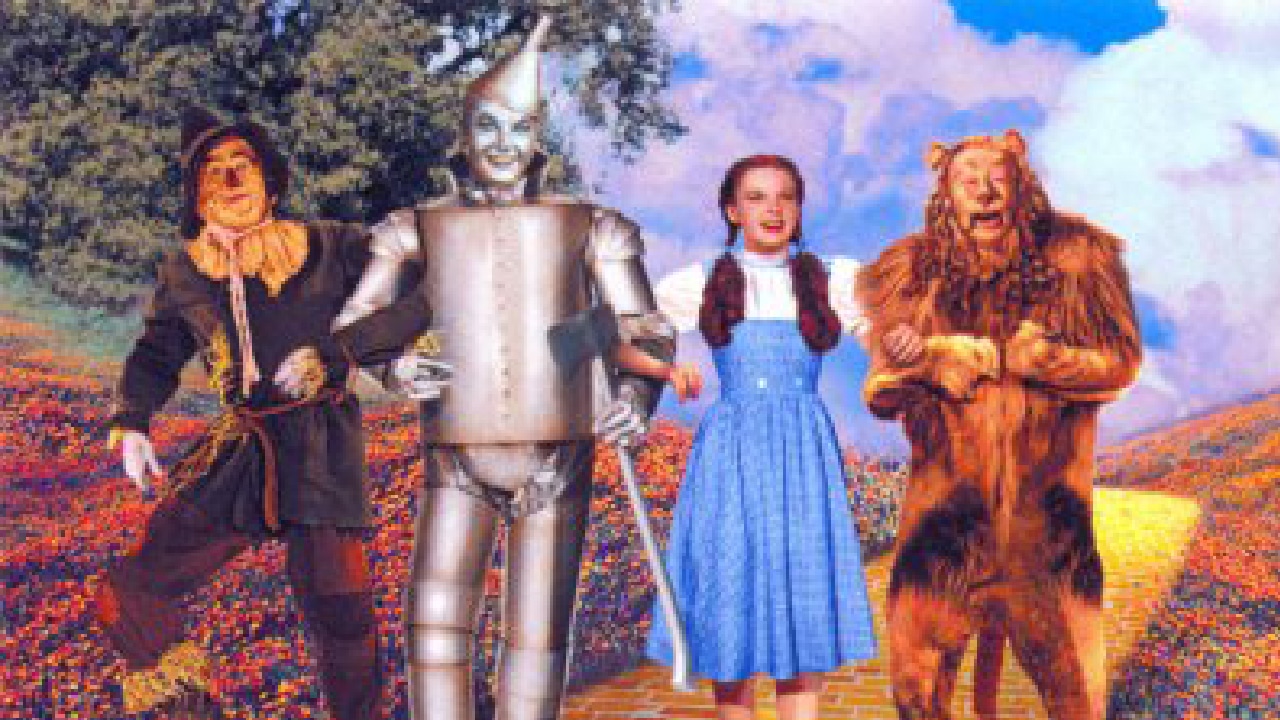
With its memorable story and its cast of colorful characters, the Wizard of Oz quickly became an American classic. More than a hundred years after the release of this book, kids everywhere are still enchanted by Oz’s world of wonder. Few, however, recognize that, under its deceptive simplicity, the story of the Wizard of Oz conceals deep esoteric truths inspired by Theosophy. Here we’ll look at the Wizard of Oz’s occult meaning and its author’s background.
Although the Wizard of Oz is widely perceived as an innocent children’s fairy tale, it is almost impossible not to attribute symbolic meaning to Dorothy’s quest. As in all great stories, the characters and the symbols of the Wizard of Oz can be given a second layer of interpretation, which may vary depending on the reader’s perception. Many analyses appeared throughout the years describing the story as an “atheist manifesto” while others saw it as a promotion of populism. It is through an understanding of the author’s philosophical background and beliefs, however, that the story’s true meaning can be grasped.
L. Frank Baum, the author of the Wizard of Oz was a member of the Theosophical Society, which is an organization based on occult research and the comparative study of religions. Baum had a deep understanding of Theosophy and, consciously or not, created an allegory of Theosophic teachings when he wrote the Wizard of Oz.
What is Theosophy?
The Theosophical Society is an occult organization, mainly based on the teachings of Helena P. Blavatsky, which seeks to extract the common roots of all religions in order to form a universal doctrine.
“But it is perhaps desirable to state unequivocally that the teachings, however fragmentary and incomplete, contained in these volumes, belong neither to the Hindu, the Zoroastrian, the Chaldean, nor the Egyptian religion,.neither to Buddhism, Islam, Judaism nor Christianity exclusively. The Secret Doctrine is the essence of all these. Sprung from it in their origins, the various religious schemes are now made to merge back into their original element, out of which every mystery and dogma has grown, developed, and become materialized.”
-H.P. Blavatsky, The Secret Doctrine
The three declared objects of the original Theosophical Society as established by Blavatsky, Judge and Olcott (its founders) were as follows:
“First — To form a nucleus of the Universal Brotherhood of Humanity, without distinction of race, creed, sex, caste, or color.
Second — To encourage the study of Comparative Religion, Philosophy, and Science.
Third — To investigate the unexplained laws of Nature and the powers latent in man.”
-The Theosophist, vol 75, No 6
The main tenets of Theosophy are thoroughly described in Blavatsky works Isis Unveiled and The Secret Doctrine. At the core of Theosophical teachings are the same tenets found in many other occult schools: the belief of the presence of a “divine spark” within every person which, with the proper discipline and training, can lead to spiritual illumination and a state of virtual godliness.
Another important principle found in Theosophy is reincarnation. It is believed that the human soul, like all other things in the universe, go through seven stages of development.
“Theosophical writings propose that human civilizations, like all other parts of the universe, develop cyclically through seven stages. Blavatsky posited that the whole humanity, and indeed every reincarnating human monad, evolves through a series of seven “Root Races”. Thus in the first age, humans were pure spirit; in the second age, they were sexless beings inhabiting the now lost continent of Hyperborea; in the third age the giant Lemurians were informed by spiritual impulses endowing them with human consciousness and sexual reproduction. Modern humans finally developed on the continent of Atlantis. Since Atlantis was the nadir of the cycle, the present fifth age is a time of reawakening humanity’s psychic gifts. The term psychic here really means the realization of the permeability of consciousness as it had not been known earlier in evolution, although sensed by some more sensitive individuals of our species.”
The ultimate goal is, of course, to return to the state of divinity from which we’ve emerged. The same tenets (with subtle variations) can be found in other schools such as Rosicrucianism, Freemasonry and other orders teachings the Mysteries.
L.Frank Baum, a Notable Theosophist
Before writing the Wizard of Oz (or even contemplating becoming a children’s story author), Baum held many jobs – one of which was editor of the Aberdeen Saturday Pioneer. In 1890, Baum wrote a series of articles introducing his readers to Theosophy, including his views on Buddha, Mohammed, Confucius, and Christ. At that time, he wasn’t a member of the Theosophical Society but he already showed a deep understanding of its philosophy. Here’s an excerpt from his “Editor’s Musings”:
“Amongst various sects so numerous in America today who find their fundamental basis in occultism, the Theosophist stands pre-eminent both in intelligence and point of numbers. Theosophy is not a religion. Its followers are simply “searchers after Truth”. The Theosophists, in fact, are the dissatisfied with the world, dissenters from all creeds. They owe their origin to the wise men of India, and are numerous, not only in the far famed mystic East, but in England, France, Germany and Russia. They admit the existence of a God – not necessarily of a personal God. To them God is Nature and Nature is God…But despite this, if Christianity is Truth, as our education has taught us to believe, there can be no menace to it in Theosophy.”
-L. Frank Baum, Aberdeen Saturday Pioneer, January 25th 1890
In another of his “Editor’s Musings”, Baum discusses the use of mystic symbolism in fiction, something he accomplished ten years later with the Wizard of Oz:
“There is a strong tendency in modern novelists towards introducing some vein of mysticism or occultism into their writings. Books of this character are eagerly bought and read by the people, both in Europe and America. It shows the innate longing in our natures to unravel the mysterious: to seek some explanation, however fictitious, of the unexplainable in nature and in our daily existence. For, as we advance in education, our desire for knowledge increases, and we are less satisfied to remain in ignorance of that mysterious fountain-head from which emanates all that is sublime and grand and incomprehensible in nature.”
At the end of this article, Baum goes into an all-out plead for more occultism in literature:
“The appetite of our age for occultism demands to be satisfied, and while with the mediocrity of people will result in mere sensationalism, it will lead in many to higher and nobler and bolder thought; and who can tell what mysteries these braver and abler intellects may unravel in future ages?”
-L. Frank Baum, Aberdeen Saturday Pioneer, February 22nd 1890
Two years after writing those articles, L. Frank Baum and his wife Maud Gage joined the Theosophical Society in Chicago. The archives of the Theosophical Society in Pasadena, California recorded the start of their membership on September 4th, 1892. In 1890, the Wizard of Oz was published. When asked about how Baum got his inspiration for the story, he replied:
“It was pure inspiration…It came to me right out of the blue. I think that sometimes the Great Author has a message to get across and He has to use the instrument at hand. I happened to be that medium, and I believe the magic key was given me to open the doors to sympathy and understanding, joy, peace and happiness.”
-L. Frank Baum, cited by Hearn 73
The Wizard of Oz is much appreciated within the Theosophical Society. In 1986, The American Theosophist magazine recognized Baum as a “notable Theosophist” who thoroughly represented the organization’s philosophy.
“Although readers have not looked at his fairy tales for their Theosophical content, it is significant that Baum became a famous writer of children’s books after he came into contact with Theosophy. Theosophical ideas permeate his work and provided inspiration for it. Indeed, The Wizard can be regarded as Theosophical allegory, pervaded by Theosophical ideas from beginning to end. The story came to Baum as an inspiration, and he accepted it with a certain awe as a gift from outside, or perhaps from deep within, himself.”
-American Theosophist no 74, 1986
So what is the esoteric meaning of this children’s story, which came to Baum as a “divine inspiration”?
The Occult Meaning of The Wizard of Oz
If you’ve never read or watched The Wizard of Oz or need your memory refreshed, here’s a quick sum-up of the movie:
The film follows 12-year-old farmgirl Dorothy Gale (Judy Garland) who lives on a Kansas farm with her Aunt Em and Uncle Henry, but dreams of a better place “somewhere over the rainbow.” After being struck unconscious during a tornado by a window which has come loose from its frame, Dorothy dreams that she, her dog Toto and the farmhouse are transported to the magical Land of Oz. There, the Good Witch of the North, Glinda (Billie Burke), advises Dorothy to follow the yellow brick road to the Emerald City and meet the Wizard of Oz, who can return her to Kansas. During her journey, she meets a Scarecrow (Ray Bolger), a Tin Man (Jack Haley) and a Cowardly Lion (Bert Lahr), who join her, hoping to receive what they lack themselves (a brain, a heart and courage, respectively). All of this is done while also trying to avoid the Wicked Witch of the West (Margaret Hamilton) and her attempt to get her sister’s ruby slippers from Dorothy, who received them from Glinda.
The said above, the entire story of the Wizard of Oz is an allegorical tale of the soul’s path to illumination – the Yellow Brick Road. In Buddhism (an important part of Theosophical teachings) the same concept is referred to as the “Golden Path”.
The story starts with Dorothy Gale living in Kansas, which symbolizes the material world, the physical plane where each one of us starts our spiritual journey. Dorothy feels an urge to “go over the rainbow”, to reach the ethereal realm and follow the path of illumination. She has basically “passed the Nadir” by demonstrating the urge to seek a higher truth.
Dorothy is then brought to Oz by a giant cyclone spiraling upward, representing the cycles of karma, the cycle of errors and lessons learned. It also represents the Theosophical belief in reincarnation, the round of physical births and deaths of a soul until it is fit to become divine. It is also interesting to note that the Yellow Brick Road of Oz begins as an outwardly expanding spiral. In occult symbolism, this spiral represents the evolving self, the soul ascending from matter into the spirit world.
Here’s an explanation of the spiral as an occult symbol:
“Spiral: The path of a point (generally plane) which moves round an axis while continually approaching it or receding from it; also often used for a helix, which is generated by compounding a circular motion with one in a straight line. The spiral form is an apt illustration of the course of evolution, which brings motion round towards the same point, yet without repetition.
The serpent, and the figures 8 and , denoting the ogdoad and infinity, stand for spiral cyclic motion. The course of fohat in space is spiral, and spirit descends into matter in spiral courses. Repeating the process by which a helix is derived form a circle produces a vortex. The complicated spirals of cosmic evolution bring the motion back to the point from which it started at the birth of a great cosmic age.”
-The Encyclopedic Theosophical Glossary
Before undertaking her journey, Dorothy is given the “silver shoes”, which represent the “silver cord” of Mystery Schools (Dorothy was wearing ruby slippers in the movie due to a last minute change by the director, who thought that the color ruby looked better against the Yellow Brick Road). In occult schools, the silver cord is considered to be the link between our material and spiritual selves.
“In Theosophy, one’s physical body and one’s Astral body are connected through a “silver cord”, a mythical link inspired by a passage in the Bible that speaks of a return from a spiritual quest. ‘Or ever the silver cord be loosed, says the book of Ecclesiastes, ‘then shall the dust return to the earth as it was and the spirit shall return unto God who gave it’.
In Frank Baum’s own writing, the silver cord of Astral travel would inspire the silver shoes that bestow special powers upon the one who wears them”
-Evan I. Schwartz, Finding OZ: How L.Frank Baum Discovered the Great American Story
During her journey along the Yellow Brick Road, Dorothy encounters Scarecrow, Tin Woodman and Cowardly Lion who are respectively searching for a brain, a heart, and courage. Those odd characters embody the qualities needed by the initiates in order to complete their quest for illumination. Baum was probably inspired by these words from Miss Blavatsky:
“There is no danger that dauntless courage cannot conquer, there is not trial that a spotless purity cannot pass through; there is no difficulty a strong intellect cannot surmount”
– H.P. Blavatsky
After surmounting many obstacles, the party finally reaches Emerald city in order to meet The Wizard.
The Wizard
Surrounded by artifices and special effects, the Wizard comes across as cruel, rude and unwise. The Wizard is, in fact, a stand-in for the personal God of the Christians and the Jews, the oppressive figure used by conventional religions to keep the masses in spiritual darkness: Jehova or Yahwe. It is later discovered that the Wizard is a humbug, a charlatan, who scares people into worshipping his Wizard. He surely could not help the characters complete their quest. If you read the literature of Mystery schools, this point of view towards Christianity is constantly expressed.
After all, is said and done, the brains, the heart and the courage needed to complete Dorothy, Scarecrow, Tinman and Lion’s quests were found within each one of them. Mystery Schools have always taught their students that one must rely on oneself to obtain salvation. Throughout the story Dorothy’s dog Toto represents her “inner voice”; her intuition. Here’s a description of Toto taken from the Theosophical Society’s website:
“Toto represents the inner, intuitive, instinctual, most animal-like part of us. Throughout the movie, Dorothy has conversations with Toto, or her inner intuitive self. The lesson here is to listen to the Toto within. In this movie, Toto was never wrong. When he barks at the scarecrow, Dorothy tries to ignore him: “Don’t be silly, Toto. Scarecrows don’t talk.” But scarecrows do talk in Oz. Toto also barks at the little man behind the curtain. It is he who realizes the Wizard is a fraud. At the Gale Farm and again at the castle, the Witch tries to put Toto into a basket. What is shadow will try to block or contain the intuitive. In both cases, Toto jumps out of the basket and escapes. Our intuitive voice can be ignored, but not contained.
In the last scene, Toto chases after a cat, causing Dorothy to chase after him and hence miss her balloon ride. This is what leads to Dorothy’s ultimate transformation, to the discovery of her inner powers. The balloon ride is representative of traditional religion, with a skinny-legged wizard promising a trip to the Divine. Toto was right to force Dorothy out of the balloon, otherwise she might never have found her magic. This is a call for us to listen to our intuition, our gut feelings, those momentary bits of imagination that appear seemingly out of nowhere.”
As stated above, the fake Wizard invites Dorothy into his balloon to go back to Kansas, her final destination. She, however, follows Toto (her intuition) and gets out of the balloon, which represents the empty promises of organized religions. This leads to her ultimate revelation and, with the help of the Good Witch of the North (her divine guide), she finally understands: everything she ever wanted could be found “in her own backyard”.
In order to obtain illumination, Dorothy had to vanquish the wicked witches of the East and the West – who were forming an evil horizontal axis: the material world. She was wise in listening to the advice of the good witches of the North and South – the vertical axis: the spiritual dimension.
At the end of the story, Dorothy wakes up in Kansas: she has successfully combined her physical and spiritual life. She is now comfortable being herself again and, despite her family not really believing the details of her quest (the ignorant profane), she can finally say “There is no place like home”.
The Wizard of Oz Used in Monarch Mind Control
Almost all documentation relating to the MK Ultra project and Mind Control mention the importance of the Wizard of Oz. In the 1940’s, the story was reportedly chosen by members of the US intelligence community to provide a thematic foundation for their trauma-based mind control program. The movie was edited and given a different meaning in order to use it as a tool to reinforce the programming on the victims. Here are some examples taken from Fritz Springmeier’s Total Mind Control Slave:
- The close relationship between Dorothy and her dog is a very subtle connection between the satanic cults use of animals (familiars). A Monarch slave child will be allowed to bond with a pet. The child will want to bond with a pet anyway because people are terrifying to it by this point. Then the pet is killed to traumatize the child.
- Monarch slaves are taught to “follow the yellow brick road.” No matter what fearful things lie ahead, the Monarch slave must follow the Yellow Brick Road which is set out before them by their master.
- The rainbow – with its seven colors – has long had the occult significance of being a great spiritual, hypnotic device.
- Dorothy is looking for a place where there is no trouble, which is a place “over the rainbow.” To escape pain alters go over the rainbow. (This is a.k.a. in Alice In Wonderland Programming as “going through the looking glass”).
“Somewhere Over the Rainbow” is probably the most dissociative song ever written and is often played in movies during violent or traumatizing events (see the movie Face-Off). The strange effect produced, where the violence doesn’t seem real anymore, is exactly how dissociation works on mind-control victims. We may also speculate that the scene where Dorothy falls asleep in a poppy field is a reference to the use of heroin to relax and manipulate the victims of mind-control. Also, consider the snow falling from the sky that awakens Dorothy from her slumber. Could this be a reference to cocaine?
In Conclusion
Allegorical stories transmitting spiritual truths have existed since man’s beginnings. These simple yet extremely profound stories have been found in all civilizations: Celtic, Indian, Persian, Aztec, Greek, Egyptian and others. Consciously or not, Frank Baum created a classical allegory which, in the same vein as Homer’s Odyssey, entertains the masses and also contains mystical messages that can be understood by the “awakened”.
The Wizard of Oz’s great success confirms America’s (and the Western world’s) real spiritual dogma. Written during the 1890’s, when most Americans were conservative Christians, Baum’s story anticipated the population’s progressive abandonment of traditional religions and the embrace of a new form of spirituality. Today’s New Age movements are gaining many adepts and, even if most of them are total shams, they all claim to be inspired by Theosophy. Could such tales have contributed to the spectacular decline of Christianity in the past decades while other movements continue to gain momentum?
- LA Fire Attack Map is identical to the LA Smart City Rail Map
- Birds of a feather flock together …
- Etsy and pizza subliminal
- Dwayne "The Rock" Johnson for Vanity Fair (circa November 2021)
- Sade 2010
- UK Plan to 'UNLEASH AI'
- TikTok video shows links to Elon's "everything" app and the mark of the beast system.
Get an e-mail notification as soon as a new article is published on The Vigilant Citizen.
-

 Movies and TV2 months ago
Movies and TV2 months agoAdrenochrome and Ritual Humiliation: The True Meaning of the Movie “The Substance”
-

 Pics of the Month3 months ago
Pics of the Month3 months agoSymbolic Pics of the Month 10/24
-

 Latest News2 months ago
Latest News2 months agoKamala’s Campaign Was Objectively the Worst in Recent History
-
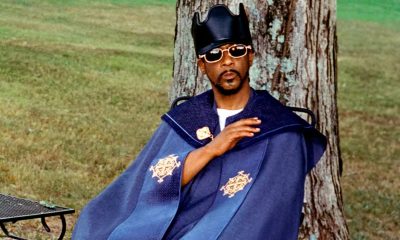
 Pics of the Month1 month ago
Pics of the Month1 month agoSymbolic Pics of the Month 12/24
-

 Latest News2 months ago
Latest News2 months agoWas the Jake Paul vs Mike Tyson Fight a Humiliation Ritual?
-

 Latest News3 months ago
Latest News3 months agoAn “Urban Opera” in Toulouse Using Massive Machines is Denounced as a Satanic Ritual
-

 Movies and TV1 month ago
Movies and TV1 month agoThe Hidden Meaning of “Smile 2”: It’s About Monarch Mind Control
-
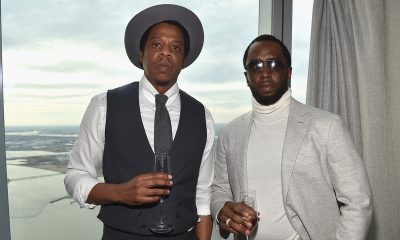
 Latest News1 month ago
Latest News1 month agoIt Was Bound to Happen: Jay-Z Accused of Abusing a 13-Year-Old Girl
